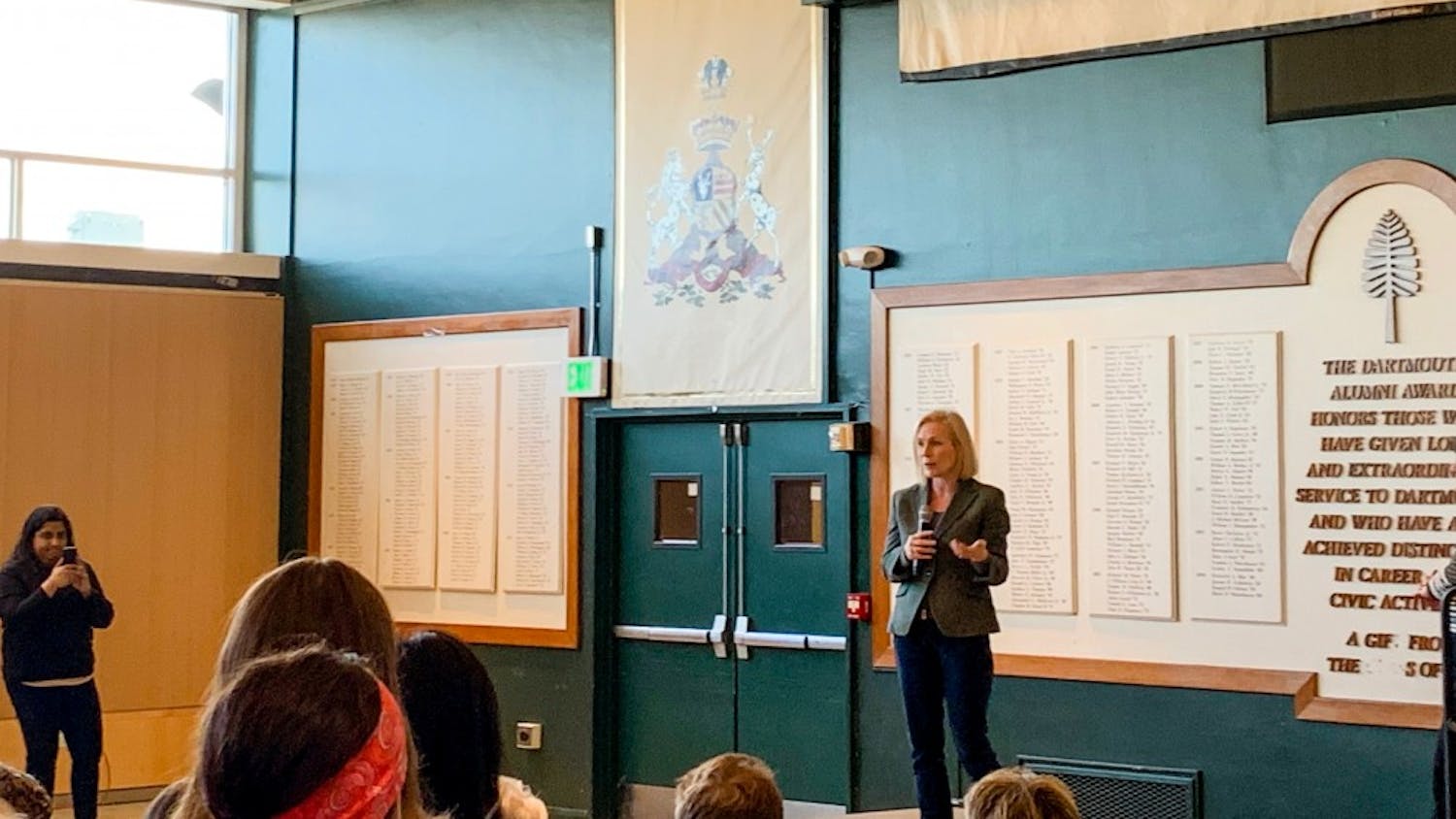This article is featured in the 2020 Winter Carnival special issue.
In the rural region of northern New Hampshire lies an area of land roughly the size of San Francisco owned and operated by the College. Managed by Dartmouth since the turn of the 19th century, the Second College Grant serves three roles: a commercial logging enterprise, a prized recreation spot and a unique forest area in need of stewardship in order to preserve its ecological value.
First granted to the College by the state of New Hampshire in 1807, the 27,000-acre area is located in the North Forest region of Vermont and New Hampshire and includes a nearly 2,840-foot peak. The land proved too rugged for early settlers, but the steady sale of timber has given the College a source of consistent income throughout its history, according to associate director of facilities operations and management Timothy McNamara.
According to McNamara, the College focuses on three main issues in managing the Grant.
“We look at the Grant as a three-legged stool: there’s commercial forestry, recreation and research,” McNamara said.
Commercial forestry in the grant has been going on for more than 200 years, according to McNamara. In recent years, Dartmouth has managed the Grant in accordance with sustainable forestry. This includes not cutting more trees than can be replaced by new growth in order to maintain the forest cover and avoiding “clear cutting” — the complete harvesting of a section of land. Sustainable forestry also means that loggers must maintain a varied number of tree species, according to McNamara.
Forest production is often measured in terms of “cords” such that one cord is equivalent to 128 cubic feet of racked wood pieces. McNamara said his department makes sure the number of cords harvested matches the amount grown.
“Let’s say the forest produces 8,000 cords of wood a year; so then we would try to not, on average, cut more than 8,000 cords a year,” he said.
In balance with the restrictions, McNamara said that the goal remains to try “to grow the highest value timber you can.”
Logging is done by both contract harvesters and truckers competitively chosen for the job.
“We are very particular in who we use,” McNamara said. “They need some special skills so as to ensure they are cutting the proper trees using the College’s sustainable practices.”
Rick Samson, a Coos County commissioner who oversees the Grant, said that he admires Dartmouth’s sustainable forestry practices and that the College is a “very good steward of the land.”
Wood harvested in Coos County is subject to a 10-percent tax, which goes back to the local community, according to Samson.
Northern Forest Center program director Maura Adams stressed the importance of this practice.
“Much of the Northern Forest was very heavily cut over the past decades, and it does need to be stewarded back across the region,” she said.
Not all forests in the region are subject to the same sustainable practices as the Grant. Yale University also owns land in northern New Hampshire through its investment manager Bayroot LLC. Their land is managed by Wagner Forest Management.
In a 2017 controversy, New Hampshire energy company Eversource leased a portion of Yale’s land holdings in the North Forest in order to build a 192-mile transmission line, called Northern Pass, from Quebec into New England. Wagner and Yale came under fire for the company’s handling of the university’s forests.
According to Sampson, who along with other local and state concerned parties reviewed and testified against the proposed project, Yale’s land use was not sustainable.
“They’re clear-cutting the land and selling everything that’s profitable to sell,” he said.
Adams added that the power lines built for the pipeline would be “incredibly tall, making a really significant impact on the visual landscape.”
According to Sampson, Northern Pipeline leaders refused to meet with him and other county commissioners opposing the change. He said they also struggled to get a significant response from Yale about their concerns.
The project went before the New Hampshire Site Evaluation Committee and was rejected based on environmental issues. Eversource appealed the ruling to the state Supreme Court in 2019, but the original ruling was eventually sustained, effectively burying the project, according to the Concord Monitor.
Samson says he used the example of Dartmouth’s stewardship in the Grant during testimony against the project, going so far as to suggest showing reporters from the Yale Daily News the Grant to demonstrate good land stewardship.
“You can see a clear difference between the land,” he said.
McNamara pointed out that the Dartmouth’s grant is also unique in its research output in the last five years.
For instance, the Adaptive Silviculture for Climate Change Project, studying several forest ecosystems, has “really turned things on big time for us with research and the U.S. Forestry Center,” according to McNamara.
Four hundred acres of the grant have been set aside for the study, which looks at how forest owners can adapt their practices to keep up with climate change. The Grant is one of five sites across the country dedicated to the project, according to McNamara.
Environmental studies professor David Lutz, who is involved with the silviculture project, reiterated the importance of the study in regards to logging, saying that foresters must think decades into the future to anticipate climate change.
He added that the most aggressive action to combat this would be to plant seedlings that are growing well in Pennsylvania to anticipate the warming climate.
McNamara said that this is one of the first projects in the grant that has taken a large part of the land and studied it. He said the study has brought increased national interest in the Grant for research on a nationwide basis, and that one of the goals of managing the Grant was to build research infrastructure.
He also pointed out that few pieces of forest land have been owned by the same owner for over 200 years and have the same detailed records as the Grant keeps.
Lutz said he believes that research in the Grant is a “confluence of all the things that Dartmouth does well,” and hopes that in the future Dartmouth grows the program and invests in more infrastructure for research.
Most Dartmouth students interact with the Grant primarily through their First-Year Trips, since many trips are runs there. Community members can also access the land and get access to cabins in the area through requesting a key in the mail.
However, there are restrictions for people who are not Dartmouth-affiliated, according to McNamara.
“You can’t drive into the grant unless you’re an alum, guest of an alum or a student — so if you’re from the outside world you have to walk in,” McNamara said.
The limited access allows the Grant’s three main uses to coexist in a sustainable way and to continue to allow people to use the Grant as a retreat, according to McNamara.
“We’re unique in that we can have the ability to show other forest owners what you can really do with long-term forest management,” McNamara said.



